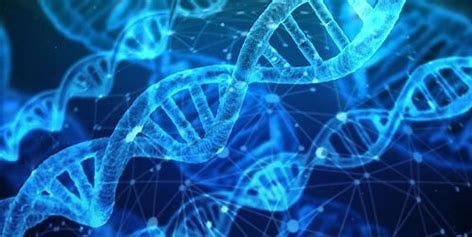Genetic testing & Fertility: What you should know BEFORE trying to conceive
Whether you’re trying to get pregnant or already expecting, weighing your genetic testing options can be both confusing and daunting. There are so many different types of tests and ways to apply genetic testing to maximize the chance of conceiving, minimize the risk of miscarriage, and to assess the health of a pregnancy. Here is a simple breakdown of what various genetic tests can actually tell you about your health, your egg quality, your chance of having a child with a specific genetic disorder, and the health of your future child.

Genetics 101
In general, healthy human beings have 46 chromosomes, or packages of DNA – 23 come from the sperm and the other 23 come from the egg. Each chromosome has many genes – specific sequences of DNA which code for a protein with a specific biological function. If an entire chromosome is missing or duplicated, it results in a major imbalance in gene function that can result in significant disease or limit viability, altogether. Many embryos form from sperm and egg that have the wrong number of chromosomes – with many of these ‘typos’ being derived from the egg. This is because, unlike men who make new sperm cells every ~72 days, women are born with all of the eggs they will ever have – and they cannot fix or modify those eggs – so over time they become prone to these errors. As women approach their late 30s/early 40s and beyond, they become increasingly prone to ovulating an egg with the wrong number of chromosomes. If an embryo forms with any number of chromosomes other than 46, most often they stop growing before they can implant (so you don’t get pregnant that month) OR they can begin to implant and then eventually stop growing at some point during the first, or early second, trimester (this is the #1 cause of miscarriage). Occasionally, the type of chromosome that is missing will still allow for live birth of a baby that will have significant medical problems (ie. Down’s syndrome (3 copies of chromosome 21) or Turner’s syndrome (a single X chromosome)).
Inherited or sporadic genetic diseases can also arise from discrete mutations in single genes, where a dysfunctional protein is produced, impairing an important biological function. Examples of these types of genetic diseases include cystic fibrosis, congenital deafness, etc.
Therefore, when you think about the different genetic testing (whether you are testing prospective parents, embryos, or the fetus during pregnancy), you are looking at one or both of the following:
- Counting the number of chromosomes (to confirm there are 46)
- Looking for the presence of mutations in specific genes
BEFORE/WHEN TRYING TO CONCEIVE
Genetic testing for prospective parents:
- Carrier screening: Blood/saliva from a patient (+/- their partner) is tested to determine what gene mutations they ‘carry’. There are several diseases that will only clinically manifest if there are two mutated copies of the gene (also known as ‘autosomal recessive’). This test is not geared towards discovering new information about one’s own health – in general, carrying a single mutation is not disease causing for the conditions of interest on these testing panels. This testing is to determine if both prospective parents carry any of the SAME mutations, thereby having the potential for their genes to combine in a way where there would be a 1 in 4 (25%) chance a future child inherited BOTH mutated copies of the gene, therefore having the actual disease. This testing is very valuable in any individual using donor sperm or egg – knowing what mutation one carries should prompt them to exclude any sperm or egg donor known to carry that same mutation, or those who have not been tested for that mutation at all. The carrier screening panels available today cover up to ~500 diseases and are constantly being improved and expanded to include more genetic mutations.
- Karyotype: This is a specialized test that involves a blood draw, collection of cells (usually a minimum of 50) which are then treated and stained to highlight the chromosomes of each cell so that their quantity and structure can be evaluated. This test is ordered in individuals/couples with recurrent pregnancy loss, to look for structural rearrangements in either partner’s chromosomes, where a piece of a chromosome could break off and be transferred to the end of another. Inversions can also occur, where the chromosome breaks and flips around so the normal sequence of genes on the chromosome is inverted. These structural rearrangements can lead to a higher than expected-for-age incidence of embryos with the wrong number of chromosomes, which can lead to infertility and recurrent miscarriages. Karyotypes may also be tested when there is suspicion for Turner’s mosaicm, where there is a mixture of normal and abnormal cells that are missing a second sex chromosome.
- Cancer genetics: Patients with a strong family history of cancer, particularly those with family members who had cancers under the age of 50 years, should see a cancer geneticist and consider specific testing to identify if they carry any mutations that could predispose them to developing cancer themselves. This may allow for close surveillance and early diagnosis and treatment of cancer, medical/surgical strategies to reduce the risk of cancer, and the option of using IVF with genetic testing of embryos to prevent propagation of the mutation to future children.
Genetic testing for embryos:
- Preimplantation genetic testing (PGT) can be performed on embryos from day 5 to 7 post fertilization. PGT necessitates IVF so that embryos can be biopsied in the IVF lab. We wait until day 5-7 as this is when embryos have grown and divided into 100-200 cells, which have separated into two cell types – the cells which one day become the placenta and those that become the baby. This allows for us to safely remove a few of the ‘future placenta’ cells to send off for genetic testing. Here are some of things which can be tested in embryos:
- The number of chromosomes – PGT can identify if there are missing or gained chromosomes, and even if a piece of a chromosome is missing/gained. Mosaicism is when the collection of cells sent off for testing has a mix of cells with 46 chromosomes, and cells with the wrong number of chromosomes (anything other than 46). Mosaicism is still very much a grey area in our field – as these mosaic embryos (with a mixture of ‘good’ and ‘bad’ cells) have been proven to lead to some live births (the longterm health of children from embryos that test as mosaic has yet to be studied). This is likely possible as the normal cells may preferentially grow and divide over the abnormal, with the embryo undergoing a sort of ‘rescue’ where the majority of it’s cells end up being normal in chromosome count. We know that mosaic embryos tend to have a lower implantation rate and higher chance of miscarriage. Also, some children with developmental disorders have been found to be mosaic.
- Sex of the embryo – since the technology that allows for quantifying the number of chromosomes in each embryo also identifies which sex chromosomes are present (XX or XY).
- Specific gene mutations – i.e. inherited cancer-predisposing mutations (ie. BRCA), mutations that were carried by and inherited from one or both parents (ie. cystic fibrosis).
- HLA matching – to select an embryo that has immune compatibility with an existing family member.
Stay tuned for my next blog post on the types of genetic testing which can be done DURING pregnancy.

